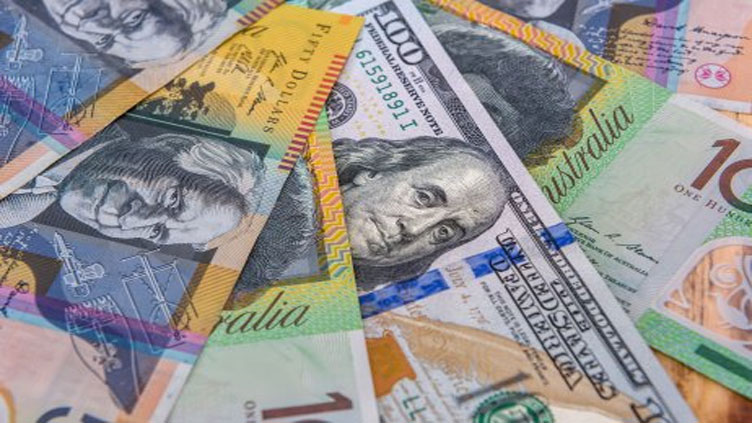Forex-Dollar advances, Aussie slides as Australia economy slows

Business
Forex-Dollar advances, Aussie slides as Australia economy slows
SINGAPORE (Reuters) - The dollar began the month on a strong footing as a higher-for-longer U.S. rates scenario took centre stage, while the Aussie slid after a raft of economic data pointed to a slowing economy and signs that inflation might be past its peak.
Australia’s economy grew at the weakest pace in a year last quarter while the country’s monthly consumer prices rose less than expected in January, separate data showed on Wednesday.
The Aussie slumped in the aftermath of the data to a two-month trough, and was last 0.47% lower at $0.6697.
“I think market participants will pay a close look to the January CPI indicator in order to gauge the near-term outlook for (the Reserve Bank of Australia’s) policy,” said Carol Kong, a currency strategist at Commonwealth Bank of Australia (CBA).
“But given what the RBA said at the last meeting, they seem to have already made up their minds and want to further raise interest rates.”
The euro slipped 0.08% to $1.0567, after failing to rise against the greenback in the previous session, even as inflation in two of the euro zone’s biggest economies rose unexpectedly in February and pushed up rate hike expectations by the European Central Bank (ECB).
“While still-high U.S. inflation augurs more Fed tightening, euro area inflation is higher and stickier in 2023, and the ECB has more tightening to do than the Fed,” said Thierry Wizman, Macquarie’s global FX and rates strategist.
Sterling fell 0.02% to $1.2015, reversing a 1% surge at the start of the week after Britain struck a post-Brexit Northern Ireland trade deal with the European Union.
British Prime Minister Rishi Sunak was in Northern Ireland and then met with his own lawmakers on Tuesday to sell the new deal.
Against a basket of currencies, the U.S. dollar index was 0.09% higher at 105.07, having risen nearly 3% in February, its first monthly gain since last September.
The resilience of the world’s largest economy, underpinned by a slew of strong economic data released in recent weeks, have raised market expectations of a higher peak in U.S. interest rates, as the Federal Reserve battles to tame inflation.
Futures pricing currently suggests a peak of around 5.4% in the Fed funds rate by September.
“We see the Fed going to 5.5%, with a growing risk of 6%,” said Michael Every, global strategist at Rabobank. “The Fed is hiking. Others can’t follow or match. The dollar will soar.”
Elsewhere, the dollar rose 0.12% against the Japanese yen to 136.38, after having spiked close to 5% against the yen in February, its largest monthly gain since last June.
The kiwi fell 0.28% to $0.6167, while the Chinese offshore yuan slipped marginally to 6.9603 per dollar.
China’s official February manufacturing PMI is due later on Wednesday, with factory activity in the world’s second-largest economy expected to have continued to grow last month.
“I would expect a solid report in the PMI readings today in China, but I doubt a strong report would give a big boost to the yuan, just given the fact that markets seem to be focused on the near-term outlook for FOMC policy, which is still in favour of the U.S. dollar,” CBA’s Kong said.


